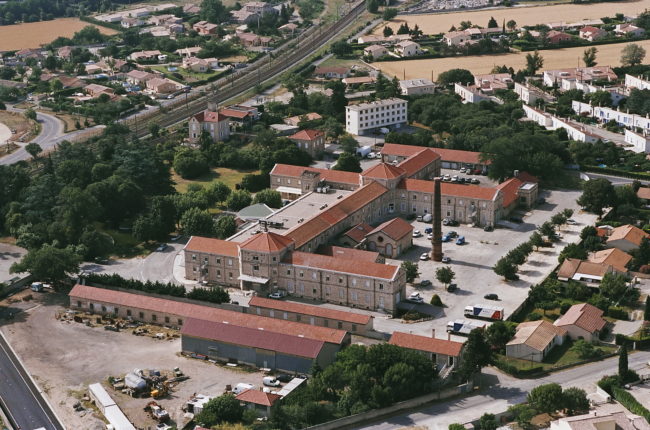

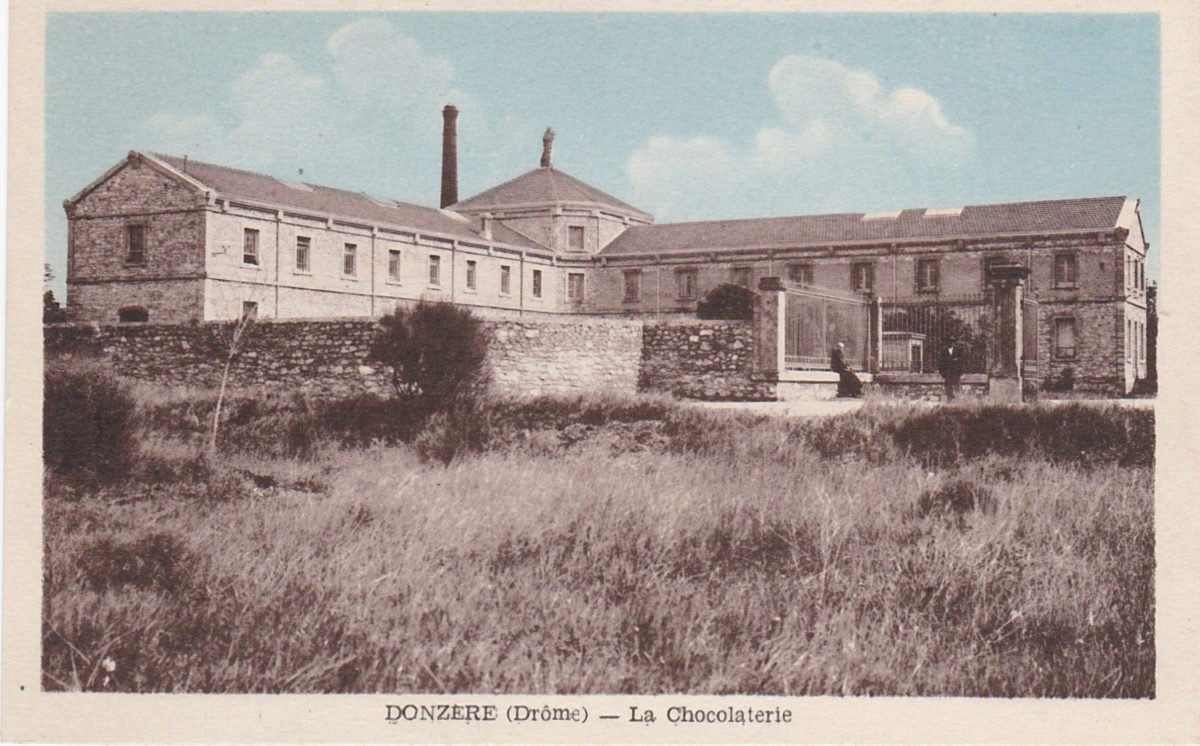
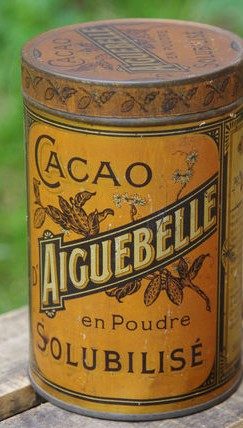
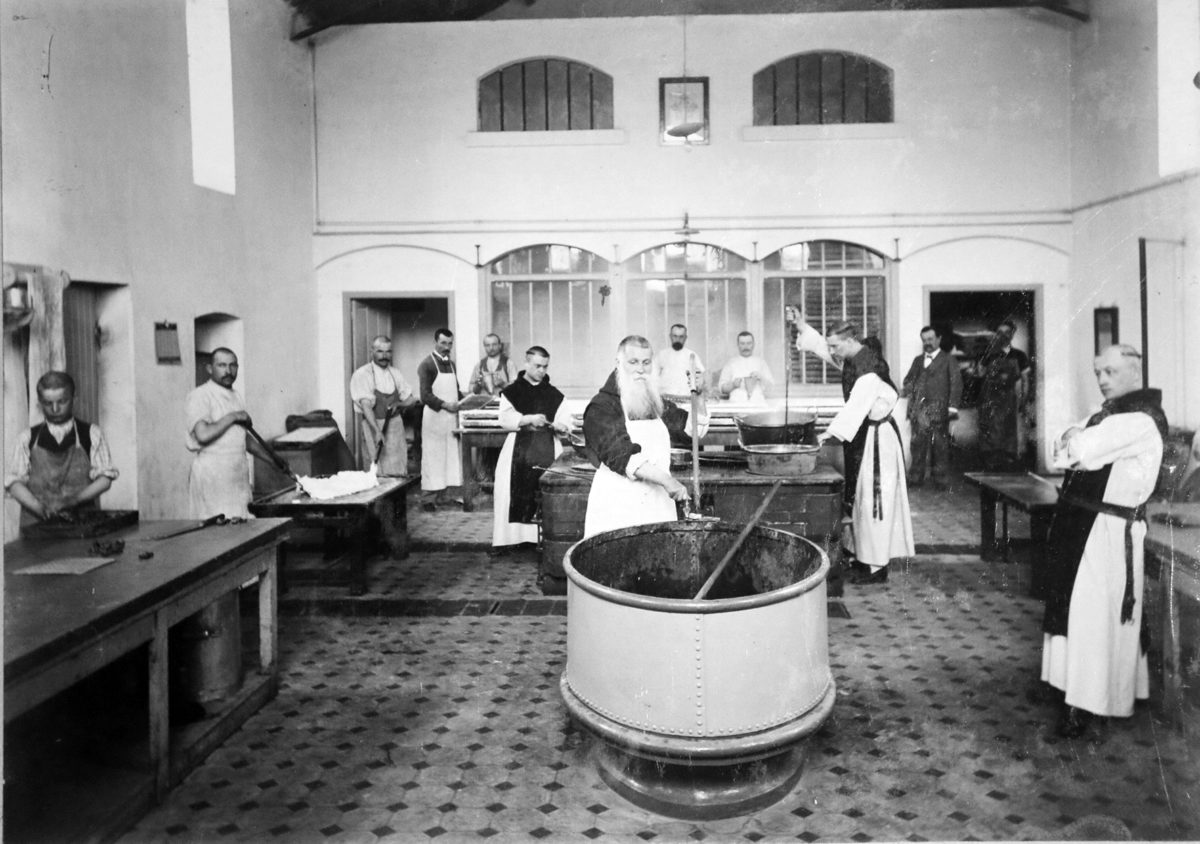

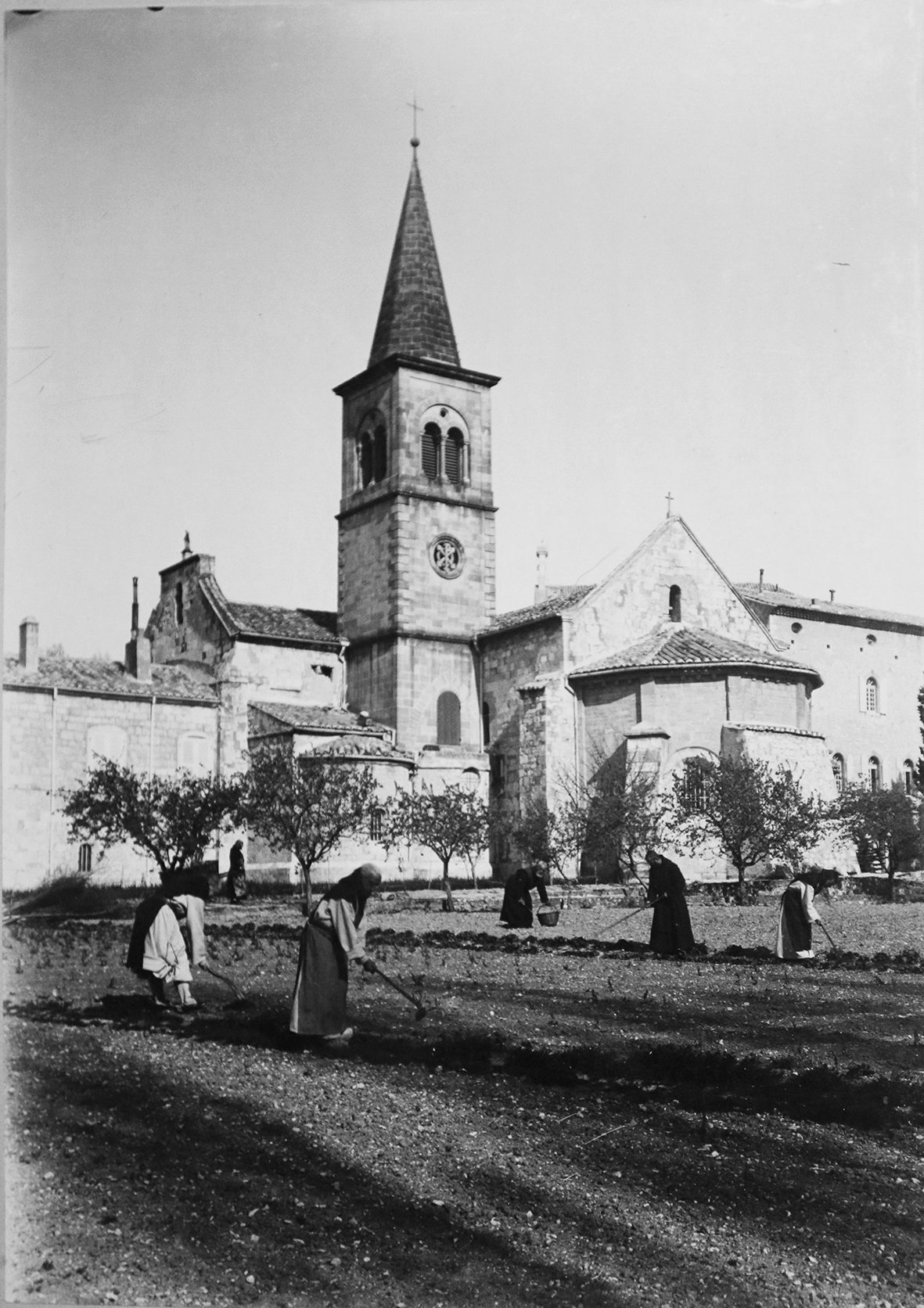
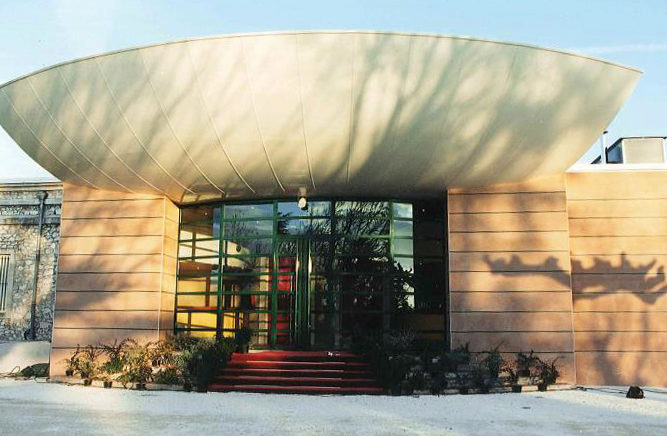




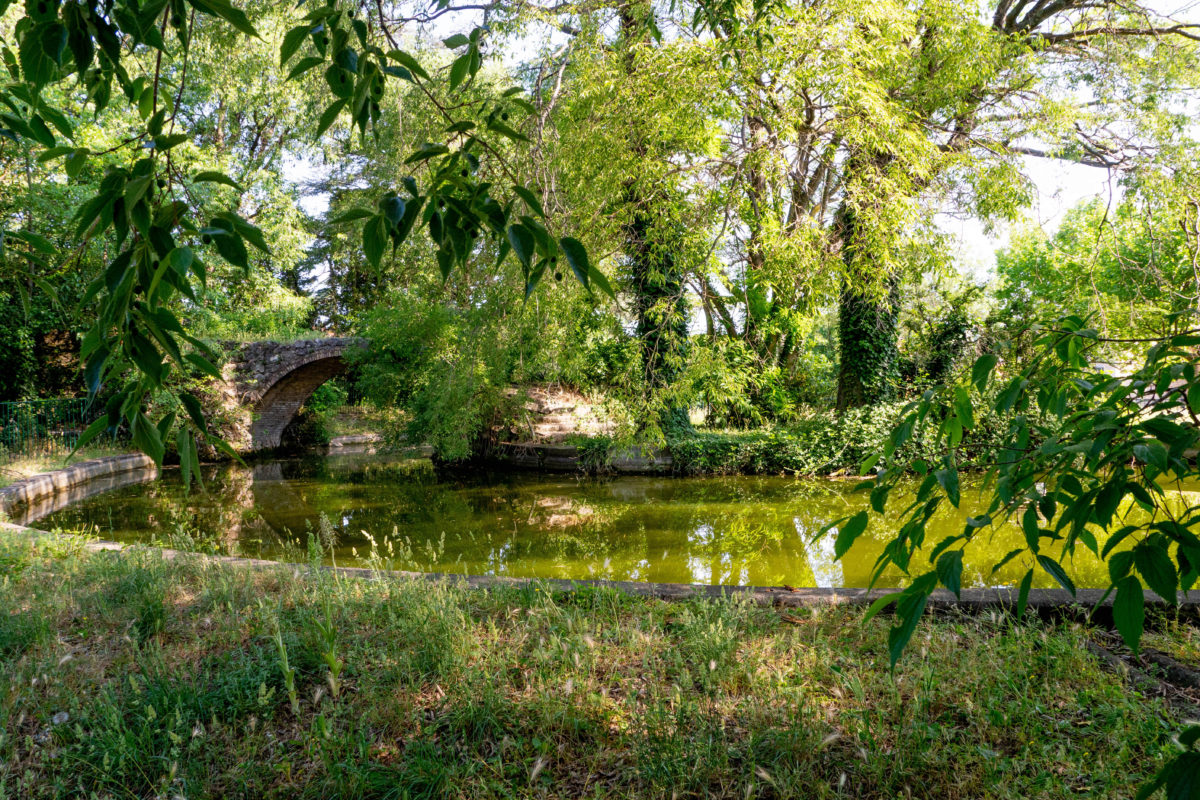
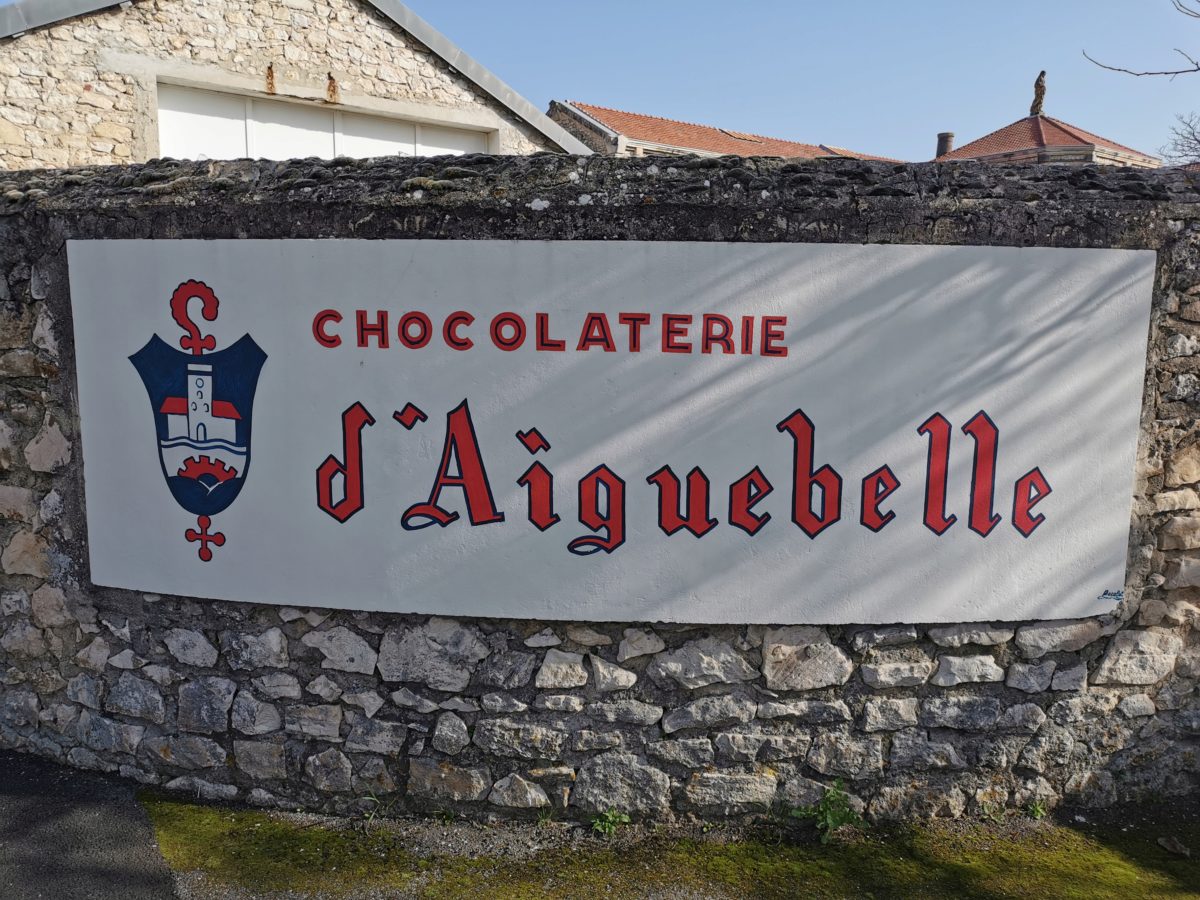
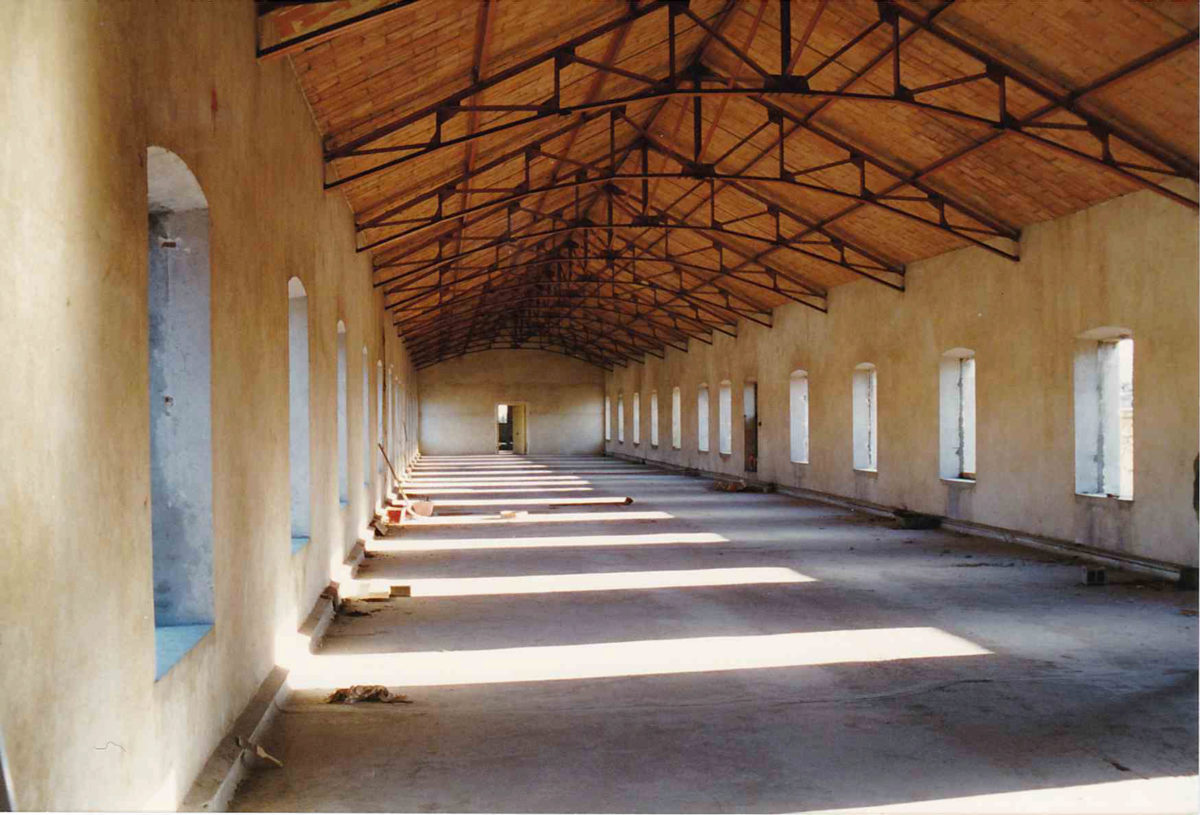

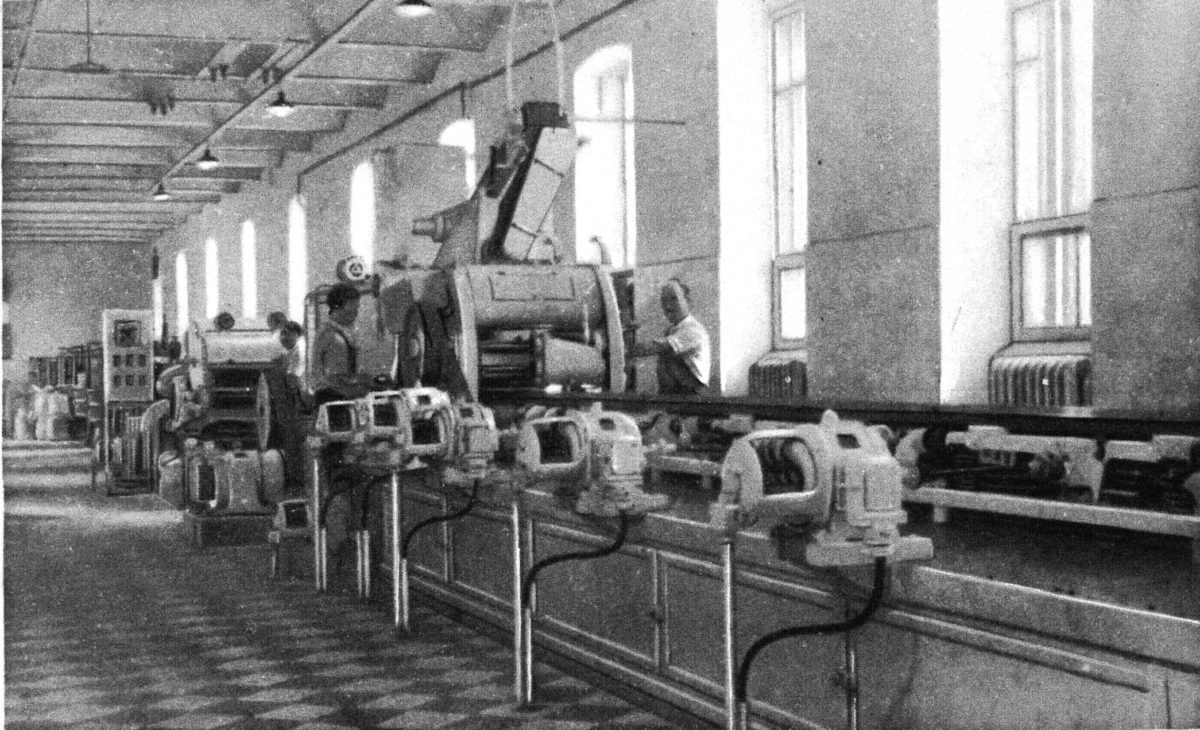
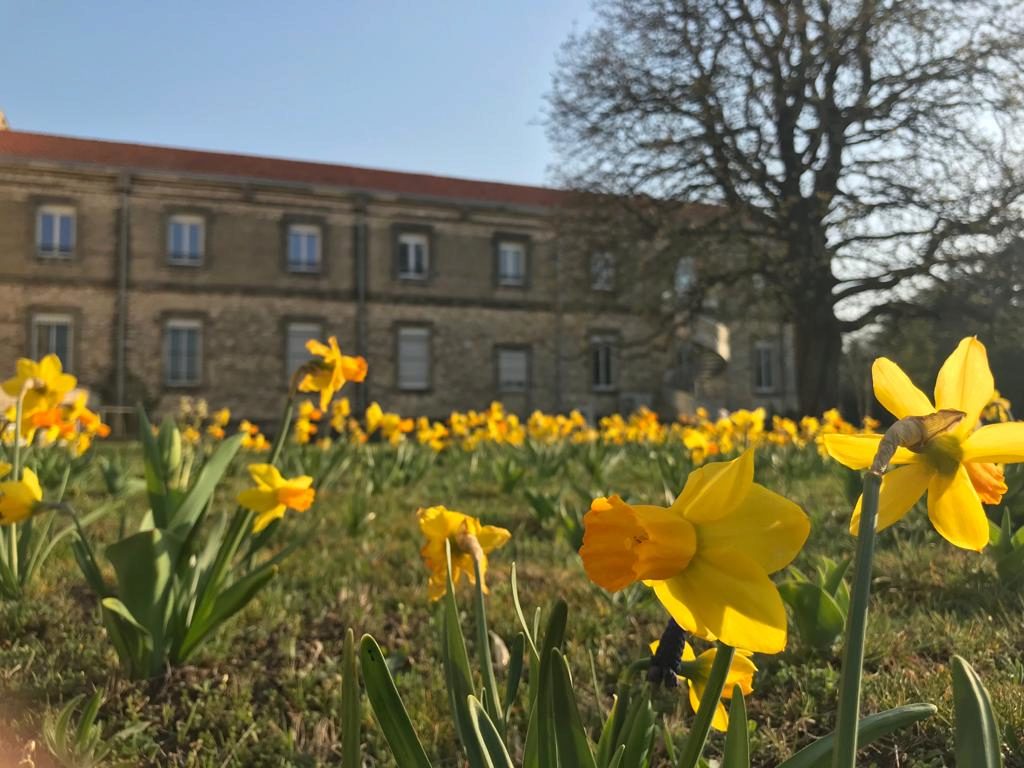
N°11- La chocolaterie d’Aiguebelle
L' histoire de l'ancienne chocolaterie d'Aiguebelle à Donzère
Les moines d’Aiguebelle et la chocolaterie
Le monastère d’Aiguebelle situé sur les communes de Montjoyer et Réauville est fondé en 1137 par les moines cisterciens de Morimont. Bien que la communauté connaisse une grande période de prospérité durant les XIIe et XIIIe siècles, de nombreuses épreuves appauvrissent le monastère à partir du XIVe siècle. La guerre de Cent Ans, la peste noire, la diminution des vocations des frères convers et le changement de mode de nomination des abbés, forcent les moines à donner en bail leurs possessions.
En 1791, les trois derniers moines encore présents sont dispersés et le monastère est pillé puis vendu comme bien national. Le site est néanmoins sauvé de la démolition grâce à sa situation géographique excentrée par rapport aux voies de communication. En 1815, une communauté de moines trappistes venus de Suisse réintègre le monastère à l’état de ruine. Deux campagnes successives de restauration sont lancées en 1815-1847 et 1856-1868.
En 1850, la communauté ayant fortement prospéré (233 moines occupent le site d’Aiguebelle), les moines doivent désormais assurer leurs besoins matériels pour survivre. De nouvelles activités sont développées telles que la tannerie, la reliure, le travail de l’osier, la confection de draps (1841-1877), l’élevage de sangsues (1860), la distillation de plantes médicinales (1863).
En 1867, la construction d’une minoterie est entreprise, mais les travaux jugés trop coûteux sont rapidement stoppés. Sous l’influence du Père Chautard, elle est transformée en chocolaterie en 1868. Des salles de fabrication, de pliage et d’expédition sont aménagées ; ainsi qu’un espace dédié à l’imprimerie et à la lithographie d’images destinées à “l’instruction de la jeunesse” (chromos).
Face à l’essor rapide de cette nouvelle entreprise, la communauté fait rapidement appel à une main d’oeuvre venue de l’extérieur. Une dizaine d’orphelins sont hébergés dans un juvenat et des jeunes âgés de douze à seize ans sont accueillis dans un pensionnat appelé “le cercle”. Des habitants des communes environnantes accompagnés de leurs familles viennent compléter les cent cinquante ouvriers qui travaillent à Aiguebelle.
Bien que les moines s'occupent des activités spirituelles (formations données aux ouvriers), culturelles (aménagement d’une salle de jeux et bibliothèque) et sociales (création d’une caisse de secours) des nouveaux pensionnaires, la vie monastique (temps de prière et méditation) est de plus en plus troublée par le bruit des machines, la présence forte de laïcs et les va-et-vient réguliers. Un éloignement de l’usine de fabrication devient indispensable.
La construction de l’usine de fabrication à Donzère
Le projet d’extension du site d’origine est étroitement lié à la création de la Société anonyme (SA) de la Chocolaterie d'Aiguebelle (au capital d’un million de francs) en juin 1891. Après avoir hésité entre plusieurs communes du sud de la Drôme, la SA choisit Donzère. Petit village de 1 500 âmes, il possède une capacité d’accroissement de population conséquente et une situation géographique idéale pour les échanges commerciaux, en étant à la fois proche du monastère, du Rhône et de la gare. Le 25 février 1893, la société acquiert une parcelle de 4,7 hectares appartenant pour plus d’un tiers à Me François Meynot.
Quelques mois après, les travaux de construction débutent. L'usine construite en pierres sur trois niveaux, est composée d’un grand corps de bâtiment de 135 mètres de long sur 10 mètres de large coupé par deux ailes de 30 mètres chacune. À l'intersection du corps de bâtiment et des ailes, sont bâtis deux vastes ronds-points surmontés chacun d’une statue dorée à la feuille : au nord la Sainte Vierge et au sud Saint Joseph.
En juillet 1895, l'usine Saint-Marie d’Aiguebelle entre en activité. Gérée par Emmanuel Saunier, la Chocolaterie possède une organisation bicéphale. La partie technique est assurée sur le site donzérois, la partie commerciale sur celui de Pont-Saint-Esprit. Parallèlement, pour assurer la transmission du savoir et encadrer le personnel durant les premières années d’existence du site, une quinzaine de frères et quelques pères sont détachés de l’abbaye. Ils assurent les activités spirituelles (temps de prière, messes, retraites pascales) pour l’ensemble des ouvriers jusqu’à leur départ en 1905, suite à la proclamation de loi de séparation des Églises et de l’État.
À cette date, le monastère décide de retirer toutes ses parts de l’usine de crainte de se voir spolier par l’État. Administrativement, seul le contrat de location passé entre la SA et l’usine Saint-Joseph perdure jusqu’en 1935. Des liens d’amitié forts restent entre les religieux et les premiers ouvriers de la Chocolaterie. Grâce à ce partenariat, l’entreprise dispose d'une clientèle fidèle dans toute la France et particulièrement dans le Sud-Est et le Languedoc où la foi catholique au début du XXe siècle est prégnante.
La diversité de produits proposés (tablettes, chocolat à cuire, bâtons, chocolats fondants…), les emballages de qualité, les images glissées dans les tablettes et imprimées sur place autour de thématiques variées participent à la renommée de l’usine jusqu’en 1925. Pour remercier ses ouvriers, l’entreprise leur propose plusieurs activités extra-professionnelles dont les charges financières sont pleinement assurées par la SA. Un club de théâtre, un club de photographie, des ateliers de bricolage et la fanfare de l’Harmonie formée d'une cinquantaine de musiciens, se déploient.
Avec l’arrivée de la Première Guerre mondiale, l’usine parvient à maintenir la cadence de production. Les jeunes hommes et les femmes (celles-ci sont présentes sur le site depuis 1910 avec l’atelier de pliage féminin) remplacent les ouvriers valides mobilisés au front. En 1918, bien que de nombreux ouvriers ne reviennent pas, la production de chocolat reste stable, évaluée à plus de 1 800 tonnes par an. En 1919, à la demande de la direction, le peintre donzérois Loÿs Prat peint à fresque quatre sujets religieux dans le rond-point nord de la Chocolaterie, symbole de l’impact des moines sur la SA.
La préservation de la friche par la mairie
À la fin des années 1970, la municipalité décide d’intervenir en faveur du maintien de la Chocolaterie d’Aiguebelle à l’annonce du licenciement de cinquante-sept personnes au 1er avril 1977. Une demande est effectuée auprès de l’État afin d’obtenir un accompagnement dans le cadre des “aides aux industries en difficulté”. Cette intervention communale ne parvient malheureusement pas à endiguer le licenciement des employés en 1977 et la fermeture définitive de l’usine en 1978.
La SA dépose dès la fermeture de son usine trois déclarations d’intention d’aliéner pour les parcelles n° 351 (maison de maître composée d’un construction et d’un terrain de 3 116 m² estimée à 445 000 francs), n° 353 (immeuble à usage de hangar d’une superficie de 1 670 m²) et n° 355 (maison de gardiennage composée d’une construction et d’un terrain d’une superficie de 1 081 m² estimée à 135 000 francs).
Le 24 juillet 1978 après en avoir été informé par le préfet de la Drôme, le maire René Michel décide d’utiliser son droit de préemption “sur la parcelle n° 353 ainsi que sur la maison dit de “conciergerie” située en bordure de route pour préserver un éventuel achat de la chocolaterie”.
En accord avec le conseil départemental et la préfecture, la commune ne fait aucune proposition de rachat au cours des années 1980, la prise de risque étant jugée trop importante au vue de sa situation financière. Aussi plusieurs projets d’acquisition et réhabilitation du site sont lancés, le plus connu étant l’installation d’un centre pénitentiaire pour femmes en 1987. Malgré les arguments avancés en terme de retombées économiques par le gérant de la SCI Farosa Aiguebelle, le conseil municipal et les Donzérois (par voix de sondage) s’opposent au projet.
Afin d’analyser le potentiel d’aménagement de l’ancienne Chocolaterie, une étude d’objectifs est demandée par la commune au cabinet d’architecte Flandin-Cottin en décembre 1989. De même, un sondage est réalisés auprès des administrés afin de connaître leur position quant à un éventuel rachat du site. Avec cent cinquante-six votes favorables, la commune décide d’acquérir les lieux.
“Le dossier Chocolaterie” est ajouté au projet de POS voté au conseil municipal du 11 mars 1991. Des négociations sont entreprises avec la SCI Farosa pour l’acquisition effective de la friche. Plusieurs “estimations des domaines” en date du 28 mars 1990 et du 30 septembre 1991 sont réalisées afin de fixer le montant définitif des bâtiments et terrains. Après avoir trouvé un accord de principe avec la SCI, le rachat est officiellement voté en conseil municipal le 16 décembre 1991. En 1992 l’ancienne usine est acquise par la commune pour la somme de 3 100 000 francs.
En 1992, l’élaboration de l’avant-projet sommaire (APS) de la Chocolaterie et du foyer des jeunes est lancée. De l’étude d’objectifs réalisée en 1989, seuls les projets de création de locaux associatifs, la remise en état du parc (première tranche) et la construction d’une salle des fêtes (deuxième tranche) sont préservés. La première tranche débute en 1993 avec le déploiement de 700 m² à destination des associations, puis en 1994 avec l’aménagement des abords du parc. Le 23 septembre 1994, une partie de la Chocolaterie est inaugurée en présence du président du conseil régional Charles Millon, de la sous-préfète Françoise Fugier, du président du conseil général Jean Mouton, du député de la Drôme Thierry Cornillet et du maire de Donzère René Michel.
1995 : Changement de cap
Le projet de réhabilitation du site de la Chocolaterie est réorienté en parc d’activités dès 1995. Coexisteront désormais sur un même lieu des entreprises, des associations sportives et culturelles et une salle polyvalente. La partie nord des bâtiments est mise en location. Six entreprises s’implantent sur le site entre 1998 et 2002 : MSE, Ferelec, EDF-SIM / service achats, Promotrans, Cofatech Services et E.V.E.
Parallèlement, la ville poursuit “les efforts de remise en état de l’ancienne friche industrielle” et une nouvelle tranche “dite conditionnelle” des travaux est votée par le conseil municipal le 8 mars 1999. Les lots portent principalement sur la construction d’une nouvelle salle des fêtes et la mise aux normes des bâtiments accueillant des entreprises (type EDF). Après l’inauguration de l’espace Aiguebelle le 17 décembre 2000 (capacité d’accueil de 600 personnes), la remise en état de l’ancienne usine est achevée en 2002.
Les services techniques installés dans la partie sud du bâtiment depuis son acquisition en 1992 déménagent définitivement en 2004. Les bureaux sont alors réaménagés et proposés à deux écoles de danse et aux associations de chasse et de pêche de la commune. Une salle de réunion est également mise à disposition pour toutes les associations locales qui en font la demande.
Au début de l’année 2006, EDF décide de s’implanter durablement sur la zone. Les cent-vingt agents permanents des services informatiques, achats et ressources humaines des centrales de Cruas et du Tricastin occupent désormais plus de 3000 m² de locaux. En partenariat étroit avec la ville, EDF réagence les espaces loués tout en tenant compte du patrimoine architectural (bâtiment et fresques de Loÿs Prat). À l’exception de quelques points de détail, la structure ne subit aucune modification forte. En 2021, les services informatiques et achats d’EDF quittent les locaux, et n’occupent désormais plus que le premier étage de la rotonde nord.
Bien que la Chocolaterie soit destinée prioritairement aux associations locales et aux entreprises, la commune autorise quelques projets atypiques au cours des années 1990 à 2000. Les plus connus sont l’aménagement d’un espace d’entreposage pour les objets découverts lors des fouilles de la construction de la ligne TGV, l’accueil de la célèbre compagnie de théâtre “Kumulus et Délice Dada” et l’installation d’un musée de la photographie et du cinéma.
En 2023, la toiture fait peau neuve.
The monks of Aiguebelle and the chocolate factory
The monastery of Aiguebelle located on the communes of Montjoyer and Réauville was founded in 1137 by the Cistercian monks of Morimont. Although the community experienced a great period of prosperity during the 12th and 13th centuries, many trials impoverished the monastery from the 14th century. The Hundred Years' War, the Black Plague, the decrease in the vocations of lay brothers and the change in the method of appointment of abbots, forced the monks to lease their possessions.
In 1791, the three remaining monks were scattered and the monastery was looted and sold as a national property. The site is nevertheless saved from demolition thanks to its geographical location away from the means of communication. In 1815, a community of Trappist monks from Switzerland returned to the monastery in ruins. Two successive restoration campaigns were launched in 1815-1847 and 1856-1868.
In 1850, the community having flourished (233 monks occupy the site of Aiguebelle), the monks must now ensure their material needs to survive. New activities were developed such as tanning, bookbinding, wicker work, making sheets (1841-1877), raising leeches (1860), and distilling medicinal plants (1863).
In 1867, the construction of a flour mill was begun, but work deemed too costly was quickly stopped. Under the influence of Father Chautard, it was transformed into a chocolate factory in 1868. Rooms for manufacturing, folding and shipping are set up; as well as a space dedicated to printing and lithography of images intended for the “instruction of youth” (chromos).
Faced with the rapid growth of this new company, the community quickly turned to outside labour. A dozen orphans are housed in a juvenat and young people between the ages of 12 and 16 are housed in a boarding school called the “circle”. The 150 workers who work in Aiguebelle are supplemented by inhabitants of the surrounding municipalities and their families.
Although the monks take care of spiritual activities (training given to the workers), cultural activities (setting up a games room and library) and social activities (creation of a relief fund) of the new residents, monastic life (prayer time and meditation) is increasingly troubled by the noise of machines, the strong presence of lay people and regular comings and goings. A distance from the manufacturing plant becomes essential.
Construction of the manufacturing plant in Donzère
The project to extend the original site was closely linked to the creation of the Société Anonyme (SA) of the Aiguebelle chocolate factory (with a capital of one million francs) in June 1891. After hesitating between several municipalities in the south of the Drôme, the SA chose Donzère. A small village of 1,500 inhabitants, it has a significant population growth capacity and an ideal geographical location for trade, being close to the monastery, the Rhone and the train station. On February 25, 1893, the company acquired a plot of 4.7 hectares belonging for more than a third to Me François Meynot.
A few months later, construction began. The factory built of stone on three levels, is composed of a large building body of 135 meters long and 10 meters wide cut by two wings of 30 meters each. At the intersection of the body of the building and the wings, two large roundabouts are built, each surmounted by a golden leaf statue: to the north the Blessed Virgin and to the south Saint Joseph.
In July 1895, the Saint-Marie d'Aiguebelle factory began operations. Managed by Emmanuel Saunier, the Chocolaterie has a two-headed organization. The technical part is ensured on the site donzérois, the commercial part on that of Pont-Saint-Esprit. At the same time, to ensure the transmission of knowledge and to supervise the staff during the first years of existence of the site, some fifteen brothers and some fathers are detached from the abbey. They carried out spiritual activities (prayer times, masses, Easter retreats) for all the workers until their departure in 1905, following the proclamation of the law of separation of the Churches and the State.
On that date, the monastery decided to withdraw all its shares from the factory for fear of being dispossessed by the state. Administratively, only the lease agreement between the SA and the Saint-Joseph plant lasted until 1935. Strong bonds of friendship remain between the religious and the first workers of the Chocolaterie. Thanks to this partnership, the company has a loyal clientele throughout France and especially in the South-East and Languedoc where the Catholic faith at the beginning of the 20th century is significant.
The variety of products on offer (bars, chocolate for cooking, sticks, melting chocolates, etc.), the quality packaging, the images placed in the shelves and printed on the spot around various themes all contribute to the reputation of the plant until 1925. To thank its workers, the company offers several extra-professional activities for which the financial burden is fully covered by the SA. A theatre club, a photography club, DIY workshops and the band of Harmony formed by about fifty musicians, are deployed.
With the arrival of the First World War, the factory managed to maintain the production rate. The young men and women (who have been on the site since 1910 with the women’s folding workshop) replace the able-bodied workers mobilized at the front. In 1918, although many workers did not return, the production of chocolate remained stable, estimated at more than 1,800 tons per year. In 1919, at the request of the management, the Donzi painter Loÿs Prat painted fresco four religious subjects in the roundaboutPoint nord de la Chocolaterie, symbol of the monks' impact on the SA.
Preservation of the wasteland by the town hall
At the end of the 1970s, the municipality decided to intervene in favour of maintaining the Aiguebelle Chocolaterie upon the announcement of the dismissal of fifty-seven people on 1 April 1977. A request is made to the State for support in the context of “aid to industries in difficulty”. This municipal intervention unfortunately failed to stem the dismissal of employees in 1977 and the permanent closure of the factory in 1978.
Upon closure of its plant, the SA filed three declarations of intent to dispose of parcels no. 351 (master’s house consisting of a construction and land of 3,116 m² estimated at 445,000 francs), no. 353 (hangar building of 1,670 m²) and no. 355 (caretaker’s house consisting of a building and a plot with an area of 1,081 m² estimated at 135,000 francs).
On July 24, 1978, after being informed by the Prefect of the Drôme, Mayor René Michel decided to use his right of first refusal “on parcel no. 353 and on the so-called “concierge” house. located along the road to preserve a possible purchase of the chocolate factory”. In agreement with the County Council and the Prefecture, the municipality made no proposal for a takeover in the 1980s, the risk taking being considered too important in view of its financial situation. Also several projects for the acquisition and rehabilitation of the site are launched, the best known being the installation of a women’s prison center in 1987. Despite the arguments put forward in terms of economic benefits by SCI manager Farosa Aiguebelle, the city council and the Donzérois (by poll) oppose the project.
In order to analyse the development potential of the former Chocolaterie, a study of objectives was requested by the municipality from the architectural firm Flandin-Cottin December 1989. Similarly, a survey is carried out among the residents to find out their position on a possible purchase of the site. With one hundred and fifty-six votes in favour, the municipality decided to acquire the premises.
“Le dossier Chocolaterie” is added to the POS project voted on by the City Council on 11 March 1991. Negotiations are undertaken with SCI Farosa for the effective acquisition of the wasteland. Several “domain estimates” dated 28 March 1990 and 30 September 1991 are carried out to determine the final amount of buildings and land. After reaching an agreement in principle with the SCI, the takeover was officially voted in the city council on 16 December 1991. In 1992 the former factory was acquired by the municipality for the sum of 3,100,000 francs.
In 1992, the development of the preliminary outline project (APS) for the Chocolaterie and the youth centre was launched. From the study of objectives carried out in 1989, only the projects of creation of associative premises, the rehabilitation of the park (first tranche) and the construction of a festival hall (second tranche) are preserved. The first phase began in 1993 with the deployment of 700 m² to associations, then in 1994 with the development of the park’s surroundings.
On September 23, 1994, a part of the Chocolaterie was inaugurated in the presence of Charles Millon, President of the Regional Council, Françoise Fugier, President of the General Council Jean Mouton, Thierry Cornillet, Deputy of the Drôme, and René Michel, Mayor of Donzère.
1995: Change of course
The project to rehabilitate the Chocolaterie site was reoriented into a business park in 1995. Companies, sports and cultural associations and a multi-purpose hall will now co-exist on the same site. The northern part of the buildings is rented. Six companies were established on the site between 1998 and 2002: MSE, Ferelec, EDF-SIM/ purchasing department, Promotrans, Cofatech Services and E.V.E.
At the same time, the city is continuing “efforts to rehabilitate the old industrial wasteland” and a new “conditional” portion of the works was voted by the city council on 8 March 1999. The lots mainly concern the construction of a new party hall and the upgrading of buildings hosting companies (EDF type). After the inauguration of the Aiguebelle space on 17 December 2000 (capacity of 600 people), the rehabilitation of the old factory was completed in 2002.
The technical services installed in the southern part of the building since its acquisition in 1992 moved permanently in 2004. The offices were then redeveloped and offered to two dance schools and the local hunting and fishing associations. A meeting room is also available for all local associations who request it.
At the beginning of 2006, EDF decided to establish a permanent presence in the area. The Cruas and Tricastin Power Plants' one hundred and twenty permanent IT, purchasing and human resources staff now occupy more than 3,000 m² of space. In close partnership with the city, EDF redevelops the rented spaces while taking into account the architectural heritage (building and frescoes of Loÿs Prat). With the exception of a few points of detail, the structure has not undergone any major changes. In 2021, EDF’s IT and purchasing services left the premises, and now occupy only the first floor of the north rotunda.
Although the Chocolaterie was primarily intended for local associations and businesses, the municipality authorized some atypical projects during the years 1990 to 2000. The most famous are the installation of a storage space for objects discovered during the excavations of the construction of the TGV line, the reception of the famous theatre company “Kumulus et Délice Dada” and the installation of a museum of photography and cinema.
In 2023, the roof was renovated.

